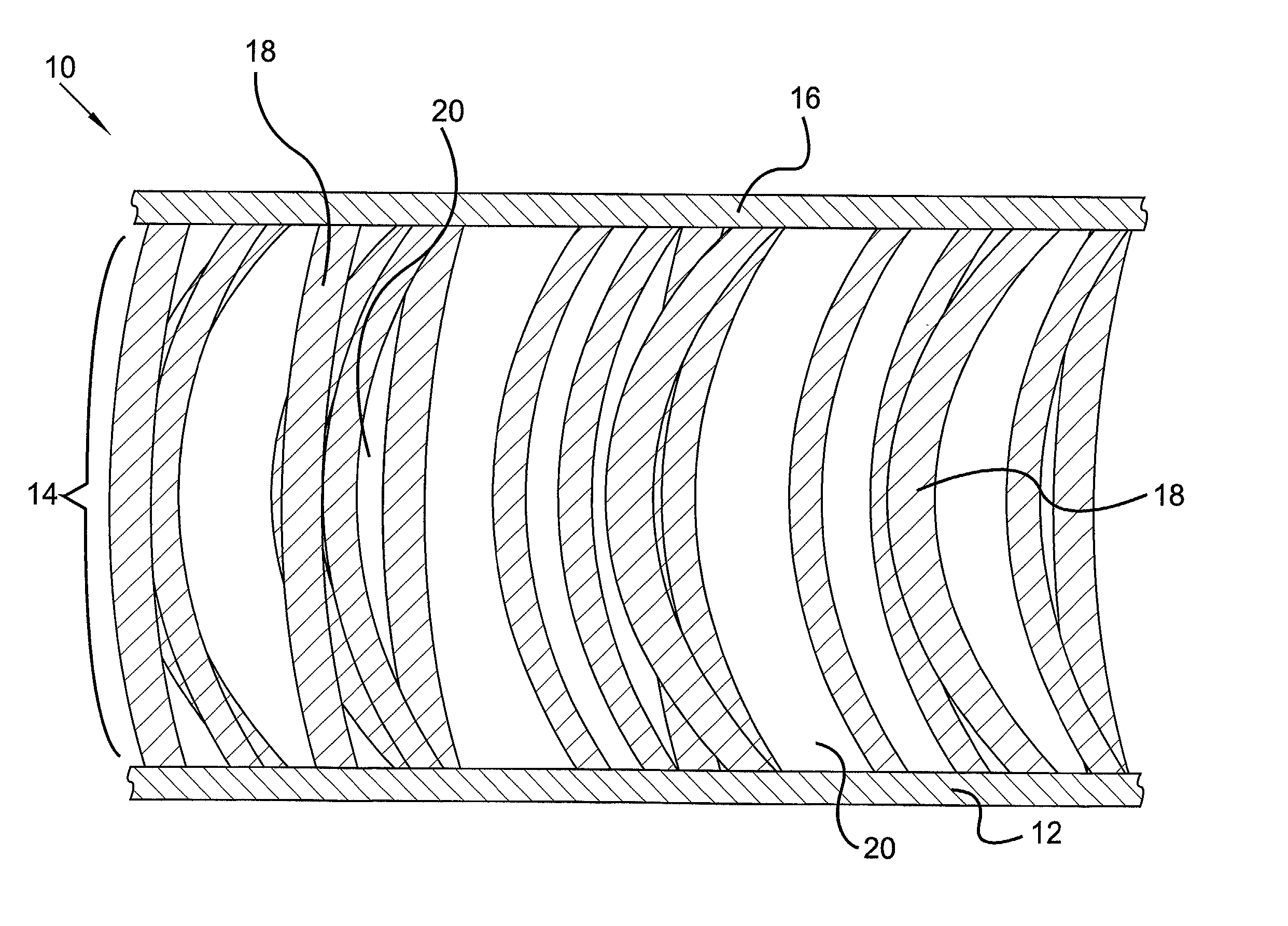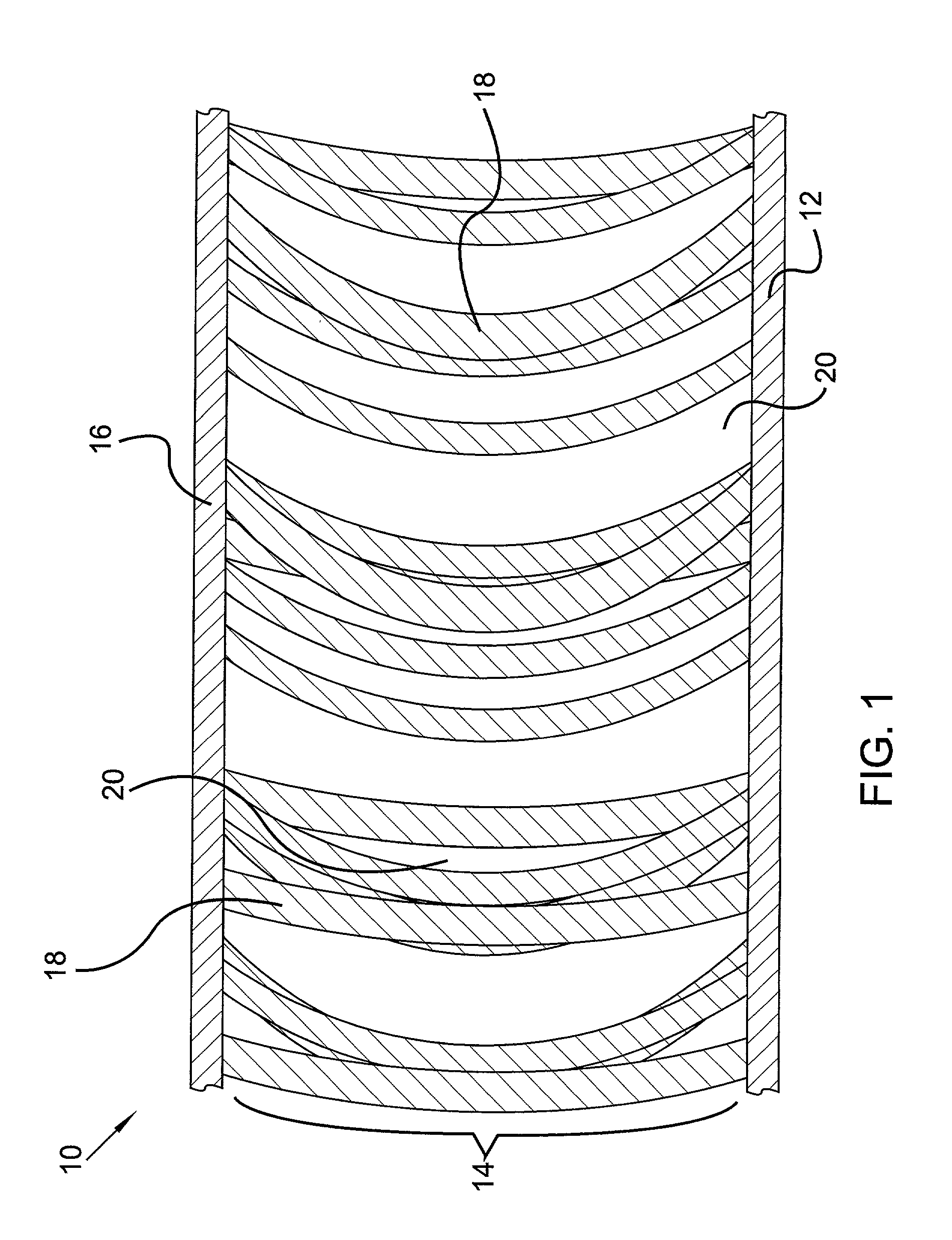Multi-functional knit fabric with enhanced insulating properties
a multi-functional, knit fabric technology, applied in the field of knitted fabrics, can solve the problems of reducing the denier rating of outdoor clothing, requiring thicker, heavier, bulkier fabrics, and severe restrictions on the freedom of movement, and achieve the effect of sufficient rigidity and increased denier rating
- Summary
- Abstract
- Description
- Claims
- Application Information
AI Technical Summary
Benefits of technology
Problems solved by technology
Method used
Image
Examples
Embodiment Construction
[0021] According to the present invention, a fabric adapted for use in outdoor apparel is provided comprising an insulating layer including a multitude of cross fibers disposed between exterior fabric layers, the combination of which creates a temperature regulating material suitable for maintaining a comfortable body temperature in environments where the ambient temperature is low. The fabric is created using a double needle bar knitting technique which allows several fiber choices to be incorporated into a single fabric sample and infuses the enclosed, insulating layer with a multitude of air spaces helpful in the insulating process. In addition to air spaces, the invention uses phase change technology in the insulating layer to regulate and stabilize the temperature of the air spaces that exist between the cross fibers, thus producing a thermal regulation effect that would not be possible if either technology were used alone.
[0022] Referring now to the figures, and in particular ...
PUM
| Property | Measurement | Unit |
|---|---|---|
| thickness | aaaaa | aaaaa |
| length | aaaaa | aaaaa |
| temperature | aaaaa | aaaaa |
Abstract
Description
Claims
Application Information
 Login to View More
Login to View More - R&D
- Intellectual Property
- Life Sciences
- Materials
- Tech Scout
- Unparalleled Data Quality
- Higher Quality Content
- 60% Fewer Hallucinations
Browse by: Latest US Patents, China's latest patents, Technical Efficacy Thesaurus, Application Domain, Technology Topic, Popular Technical Reports.
© 2025 PatSnap. All rights reserved.Legal|Privacy policy|Modern Slavery Act Transparency Statement|Sitemap|About US| Contact US: help@patsnap.com



